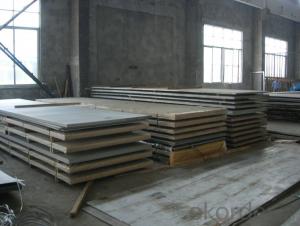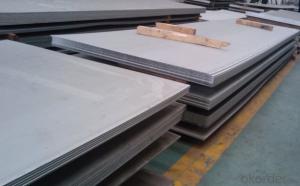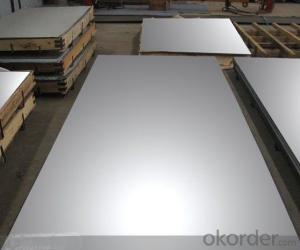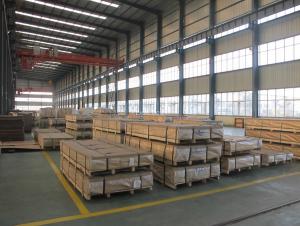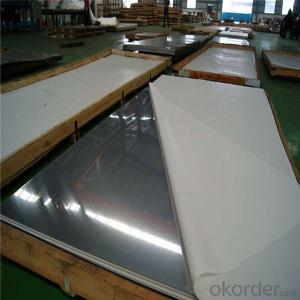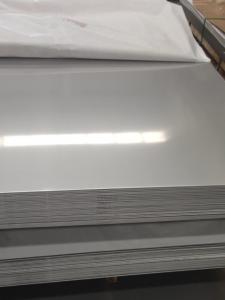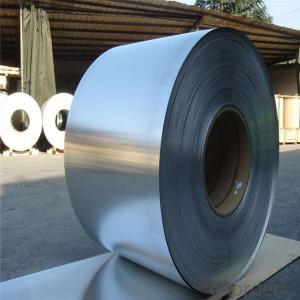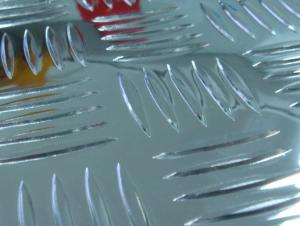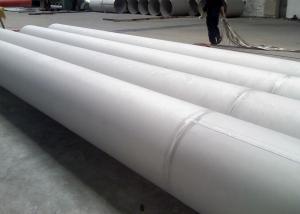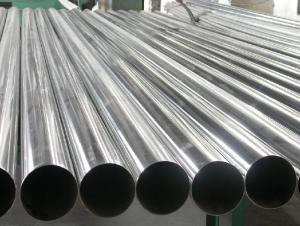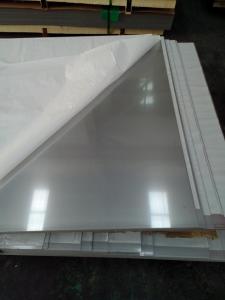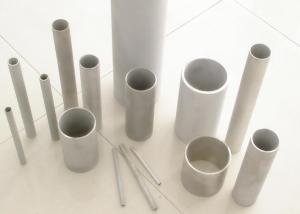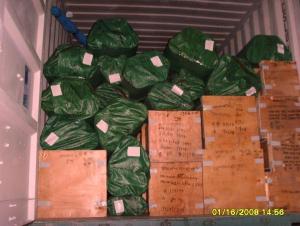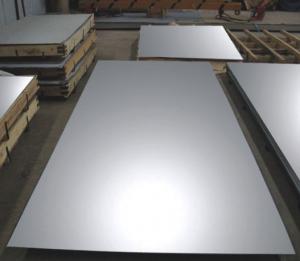stainless steel plate and sheet 301 cold rolled stocks
- Loading Port:
- Tianjin
- Payment Terms:
- TT OR LC
- Min Order Qty:
- -
- Supply Capability:
- 5000 m.t./month
OKorder Service Pledge
Quality Product, Order Online Tracking, Timely Delivery
OKorder Financial Service
Credit Rating, Credit Services, Credit Purchasing
You Might Also Like
grade | 201,301,304,310,316,410,420,430,etc. |
surface | 2B,NO.1, NO.4, Mirror, Hairline, etc. |
thickness | 1MM, |
width | 1200MM,1220MM,1500MM,ETC. |
length | 2400MM,2440MM,3000MM,ETC. |
Payment terms | T/T, or L/C. |
Delivery time | Normally within 1 weeks after get your deposits. |
package | Standard export package, normally with wooden pallets |
MOQ | 5 tons/each size |
OUR STAINLESS STEEL SHEET CAN BE USED IN THE DIFFERENT FIELD,
SUCH AS: CONSTRUCTION FIELD, DECORATION FIELD, ETC.
- Q: What is the standard size of a stainless steel sheet?
- The standard size of a stainless steel sheet can vary depending on the manufacturer and the specific application. However, common standard sizes for stainless steel sheets include 4 feet by 8 feet, 5 feet by 10 feet, and 4 feet by 10 feet.
- Q: How do you prevent scratching on stainless steel sheets during handling and installation?
- To avoid scratching stainless steel sheets while handling and installing them, there are several precautions you can take: 1. Apply protective covering: Prior to handling or installation, it is advisable to apply a protective film or covering on the surface of the stainless steel sheets. This covering acts as a barrier, safeguarding against scratches and scuff marks during transportation and installation. It is important to ensure that the chosen covering is suitable for stainless steel and leaves no residue when removed. 2. Handle with caution: It is crucial to be mindful of how you handle the stainless steel sheets. Avoid dragging or sliding them against rough surfaces or each other, as this can result in scratches. Instead, use appropriate lifting techniques and handle the sheets with clean, dry hands or gloves to minimize the risk of leaving marks. 3. Utilize suitable tools: When working with stainless steel sheets, ensure that you use tools specifically designed for this purpose. Refrain from using tools with rough or abrasive surfaces that could potentially scratch the stainless steel. Opt for tools made from soft materials or those with protective coatings to reduce the chances of surface damage. 4. Keep work areas clean: Before installing stainless steel sheets, it is essential to ensure that the work area is clean and free from any debris or particles that could potentially scratch the surface. Use a clean cloth or soft brush to wipe down the area, removing any dirt, dust, or loose materials that could cause scratches during the installation process. 5. Secure sheets during transportation: If you need to transport stainless steel sheets, it is crucial to secure them properly to prevent any movement or shifting that could lead to scratches. Utilize appropriate packaging materials such as foam inserts, edge protectors, or straps to keep the sheets in place and minimize the risk of damage. By adhering to these preventive measures, you can significantly reduce the likelihood of scratching stainless steel sheets during handling and installation, ensuring a flawless finish and preserving the quality of the material.
- Q: What are stainless steel sheets used for?
- Stainless steel sheets are used for a variety of applications across various industries. Due to their excellent corrosion resistance, durability, and aesthetic appeal, these sheets are widely utilized in both commercial and residential settings. In the construction industry, stainless steel sheets are used for roofing, cladding, and facades, as they can withstand harsh environmental conditions and provide a modern, sleek appearance. In the automotive industry, they are commonly used for manufacturing car bodies, exhaust systems, and decorative trims. Moreover, stainless steel sheets find extensive use in the food and beverage industry, where their hygienic properties make them suitable for kitchen equipment, countertops, and food processing machinery. Additionally, these sheets are employed in medical equipment, pharmaceuticals, and laboratory settings due to their resistance to corrosion and easy cleanability. Other applications include furniture, appliances, signage, and decorative purposes, as stainless steel sheets can be easily customized and formed into various shapes and sizes. Overall, stainless steel sheets are a versatile material that meets a wide range of needs across different industries, thanks to their durability, strength, and corrosion resistance properties.
- Q: How do I calculate the strength of stainless steel sheets?
- To calculate the strength of stainless steel sheets, you need to consider factors such as the material's tensile strength, yield strength, and thickness. Tensile strength refers to the maximum amount of stress a material can withstand before it breaks, while yield strength is the maximum stress the material can endure without permanent deformation. Additionally, the thickness of the sheet will also affect its overall strength. By referring to the specifications provided by the manufacturer or consulting relevant engineering resources, you can determine the specific strength values for the stainless steel sheets you are working with.
- Q: How do stainless steel sheets compare to other types of sheet metals?
- Stainless steel sheets offer several advantages over other types of sheet metals. They are highly resistant to corrosion, making them ideal for applications where exposure to moisture or chemicals is common. Stainless steel sheets are also durable and can withstand high temperatures, making them suitable for various industrial and construction purposes. Additionally, they have an attractive appearance and are easy to clean, making them a popular choice in architectural and decorative applications.
- Q: Can stainless steel sheets be used for water filtration?
- Yes, stainless steel sheets can be used for water filtration. Stainless steel is known for its corrosion resistance and durability, making it suitable for various applications including water filtration systems. The sheets can be used as filters or screens to remove impurities and contaminants from water, ensuring cleaner and safer drinking water.
- Q: Can stainless steel sheets be used for storage tanks?
- Yes, stainless steel sheets can be used for storage tanks. Stainless steel is a durable and corrosion-resistant material, making it suitable for storing various substances, including liquids and gases, in industrial and commercial applications.
- Q: Can stainless steel sheets be used for fire escapes?
- Indeed, fire escapes can utilize stainless steel sheets. Stainless steel, known for its remarkable durability and resistance, exhibits the ability to endure elevated temperatures and retain its structural integrity when confronted with fire. This material, free from combustible properties, abstains from emitting hazardous gases when subjected to heat, thereby establishing itself as a secure option for constructing fire escapes. Moreover, the corrosion resistance inherent in stainless steel guarantees the longevity and dependability of the fire escape system. Ultimately, stainless steel sheets emerge as an exceptional selection for fire escapes due to their robustness, fire resistance, and durability.
- Q: How do you prevent pitting corrosion on stainless steel sheets?
- To prevent pitting corrosion on stainless steel sheets, there are several measures that can be taken: 1. Proper alloy selection: Choosing the right grade of stainless steel with high resistance to corrosion is crucial. Grades such as 316 and 904L are known for their excellent resistance to pitting corrosion. 2. Passivation: Stainless steel sheets should be passivated after fabrication to remove any free iron or contaminants on the surface. Passivation involves treating the sheets with an acid solution, followed by a thorough rinse and drying. This helps to restore the protective chromium oxide layer on the surface, enhancing corrosion resistance. 3. Regular cleaning and maintenance: Stainless steel sheets should be cleaned regularly to remove any dirt, debris, or contaminants that can lead to pitting corrosion. Mild soap, water, and a soft cloth or sponge can be used for routine cleaning. Harsh or abrasive cleaners should be avoided. 4. Avoid exposure to aggressive environments: Stainless steel sheets should be protected from exposure to chemicals, chlorides, acids, and other corrosive substances. If such exposure is unavoidable, proper measures like the use of protective coatings or barriers should be implemented. 5. Avoid stagnant conditions: Pitting corrosion is often accelerated in stagnant or low-flow conditions where oxygen levels are depleted. Ensuring proper ventilation and circulation of air or fluids can help prevent pitting corrosion on stainless steel sheets. 6. Regular inspection and maintenance: Periodic visual inspection and monitoring of stainless steel sheets can help identify any early signs of pitting corrosion. If any pitting is noticed, immediate action should be taken to address the issue, such as applying a suitable corrosion inhibitor or protective coating. By following these preventive measures, it is possible to minimize the risk of pitting corrosion on stainless steel sheets, ensuring their long-term durability and performance.
- Q: Are stainless steel sheets suitable for industrial kitchens?
- Industrial kitchens find stainless steel sheets highly suitable due to their advantageous properties. Firstly, stainless steel's resistance to corrosion and rust makes it ideal for environments with high humidity and exposure to water and chemicals found in industrial kitchens. This resistance ensures the durability and longevity of stainless steel sheets, making them a cost-effective option. Secondly, stainless steel's easy maintenance and cleaning are crucial in busy kitchen environments where hygiene is of utmost importance. Its smooth and non-porous surface prevents the accumulation of dirt, grease, and bacteria, reducing the risk of cross-contamination and providing a hygienic solution. Furthermore, stainless steel sheets are heat resistant, making them suitable for use near stoves, ovens, or grills where high temperatures are present. They are also unaffected by staining or acidic and alkaline substances commonly used in cooking and cleaning processes. In addition to their functional properties, stainless steel sheets enhance the overall appearance of industrial kitchens. They provide a sleek and modern look that effortlessly complements various design styles. Overall, stainless steel sheets offer a practical and visually appealing solution for industrial kitchens, meeting the demands of a busy commercial kitchen environment through their corrosion resistance, durability, ease of cleaning, heat resistance, and hygienic properties.
Send your message to us
stainless steel plate and sheet 301 cold rolled stocks
- Loading Port:
- Tianjin
- Payment Terms:
- TT OR LC
- Min Order Qty:
- -
- Supply Capability:
- 5000 m.t./month
OKorder Service Pledge
Quality Product, Order Online Tracking, Timely Delivery
OKorder Financial Service
Credit Rating, Credit Services, Credit Purchasing
Similar products
Hot products
Hot Searches
Related keywords







